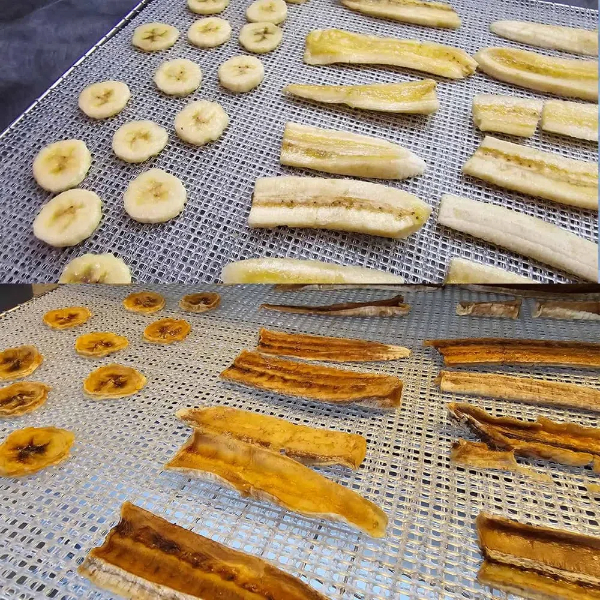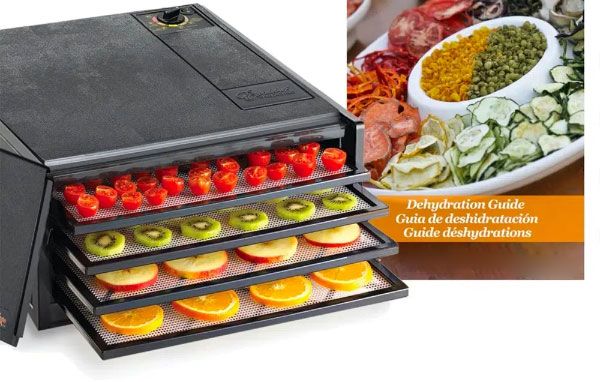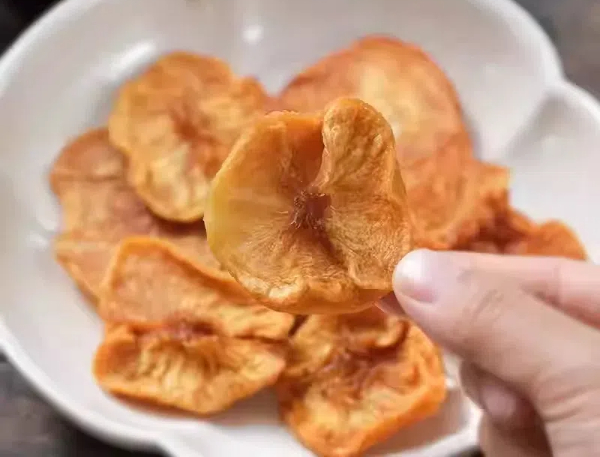
Content Menu
● Understanding Food Dehydration
● Key Features to Consider
>> 1. Temperature Control
>> 2. Timer Functionality
>> 3. Airflow Design
>> 4. Number of Trays
>> 5. Material Quality
>> 6. Automatic Shut-Off Feature
>> 7. Noise Level
>> 8. Accessories
>> 9. Energy Efficiency
>> 10. Warranty and Customer Support
● Popular Types of Food Dehydrators
● How to Use a Food Dehydrator
● Common Mistakes When Using a Food Dehydrator
● Benefits of Using a Food Dehydrator
● Creative Uses for Dehydrated Foods
● Conclusion
● FAQ
>> 1. What foods can I dehydrate?
>> 2. How long does it take to dehydrate food?
>> 3. Can I leave my dehydrator unattended?
>> 4. Is it necessary to pre-treat fruits before dehydration?
>> 5. How do I clean my food dehydrator?
● Citations:
Food dehydrators are essential kitchen appliances for anyone interested in preserving food, creating healthy snacks, or exploring culinary creativity. When selecting a food dehydrator, it's crucial to consider various features that will enhance your drying experience and ensure optimal results. This article will explore the key features to look for in a food dehydrator, helping you make an informed decision.

Understanding Food Dehydration
Food dehydration is the process of removing moisture from food, which helps prevent spoilage and extends shelf life. This is achieved by circulating warm air around the food at low temperatures, typically between 90°F and 160°F (32°C to 71°C). The result is lightweight, nutrient-rich snacks that retain much of their original flavor and health benefits.
Dehydration not only preserves food but also concentrates flavors, making dried fruits and vegetables a delicious addition to meals and snacks. Furthermore, dehydrated foods can be rehydrated later for soups, stews, or casseroles, adding versatility to your cooking options.
Key Features to Consider
When choosing a food dehydrator, consider the following features:
1. Temperature Control
Adjustable temperature settings are vital as different foods require different drying temperatures. A dehydrator with a range of at least 85°F to 160°F allows for versatility in drying fruits, vegetables, herbs, and meats. For instance, fruits like apples and bananas may require lower temperatures (around 135°F), while jerky made from meat may need higher settings (around 155°F).
2. Timer Functionality
A built-in timer allows you to set the dehydrator and forget about it until the process is complete. This feature is particularly useful for overnight drying sessions or when you're away from home. Some advanced models even come with digital timers that can be programmed for precise drying times.
3. Airflow Design
Dehydrators typically come in two airflow designs: vertical and horizontal.
- Vertical airflow models have trays stacked on top of each other with the heating element usually located at the bottom or top. These models may require periodic tray rotation for even drying.
- Horizontal airflow models have trays that slide in and out like an oven, with the fan and heating element located at the back. This design provides more even drying and eliminates the need for rotating trays. Many users prefer horizontal airflow models for their efficiency and convenience.
4. Number of Trays
Consider how much food you plan to dehydrate at once. A dehydrator with multiple trays (typically between 4 to 12) will allow you to dry larger quantities of food simultaneously. Some models also offer expandable options for additional trays, making them suitable for larger families or those who frequently entertain guests.
5. Material Quality
The trays should be made from high-quality materials that can withstand heat without warping or leaching harmful chemicals. Stainless steel trays are more durable compared to plastic ones and are often easier to clean. Additionally, BPA-free plastic trays are available for those who prefer lightweight options.

6. Automatic Shut-Off Feature
This safety feature automatically turns off the dehydrator after a set time or when the drying cycle is complete, preventing over-drying and potential fire hazards. This feature is particularly beneficial for those who may forget to turn off their appliances after use.
7. Noise Level
If you plan to use your dehydrator frequently or overnight, consider its noise level. Some models operate quietly, allowing you to use them without disturbing your household. Look for units that specify low noise levels in their product descriptions.
8. Accessories
Look for dehydrators that come with useful accessories such as fruit roll sheets for making fruit leather, mesh screens for drying small items like herbs, and drip trays for catching juices. These accessories can enhance your dehydrating experience and allow you to experiment with different recipes.
9. Energy Efficiency
Consider the power consumption of the dehydrator. Most models range from 300 to 1000 watts; higher wattage typically means faster drying times but may increase energy costs. Selecting an energy-efficient model can help reduce your electricity bill while still providing excellent performance.
10. Warranty and Customer Support
A good warranty indicates manufacturer confidence in their product's quality. Look for a model that offers at least a one-year warranty along with reliable customer support. This assurance can provide peace of mind in case of any issues that may arise during use.
Popular Types of Food Dehydrators
There are various types of food dehydrators available on the market:
- Stackable Dehydrators: These are often more compact and allow users to add extra trays as needed but may require more maintenance in terms of tray rotation.
- Box-Type Dehydrators: These provide better airflow and are easier to access during the drying process, making them ideal for larger batches.
How to Use a Food Dehydrator
Using a food dehydrator is straightforward:
1. Preparation: Wash and slice your fruits or vegetables evenly to ensure uniform drying.
2. Setting Up: Arrange the prepared food on the trays without overcrowding them.
3. Temperature Setting: Adjust the temperature according to the type of food you are dehydrating.
4. Timing: Set the timer based on recommended drying times for specific foods.
5. Monitoring: Check periodically if your model does not have a transparent door.
Common Mistakes When Using a Food Dehydrator
While using a food dehydrator can be simple, there are common mistakes that many users make:
- Overloading Trays: Packing too much food onto each tray can lead to uneven drying.
- Inconsistent Slicing: Cutting fruits or vegetables into uneven sizes can result in some pieces being over-dried while others remain moist.
- Ignoring Drying Times: Not following recommended drying times can lead to spoilage if foods aren't dried thoroughly or loss of texture if dried too long.
Benefits of Using a Food Dehydrator
- Preserves nutritional value while extending shelf life.
- Reduces waste by allowing you to use surplus produce.
- Provides healthy snack options without preservatives.
- Encourages culinary creativity with various recipes.
- Saves money by allowing you to buy seasonal produce in bulk when prices are lower.
Creative Uses for Dehydrated Foods
Dehydrated foods aren't just snacks; they can be used creatively in various recipes:
- Soups & Stews: Rehydrate vegetables like carrots or peas before adding them to soups.
- Trail Mixes: Combine dried fruits with nuts and seeds for a nutritious trail mix.
- Granola Bars: Use dried fruits as ingredients in homemade granola bars.
- Herbal Teas: Dry herbs like mint or chamomile for homemade herbal teas.
Conclusion
Selecting a food dehydrator involves understanding your needs and knowing what features will best serve those needs. From adjustable temperature controls to automatic shut-off features, each aspect contributes to an efficient and enjoyable dehydration experience. By investing in a quality dehydrator equipped with these essential features, you can enjoy delicious homemade snacks while preserving your favorite fruits and vegetables year-round.

FAQ
1. What foods can I dehydrate?
You can dehydrate a wide variety of foods including fruits (apples, bananas), vegetables (carrots, tomatoes), herbs (basil, oregano), and meats (jerky).
2. How long does it take to dehydrate food?
Drying times vary depending on the type of food and thickness of slices but generally range from 4 hours for fruits to 12 hours or more for meats.
3. Can I leave my dehydrator unattended?
Yes, but it's advisable to choose models with timers and automatic shut-off features for safety.
4. Is it necessary to pre-treat fruits before dehydration?
Pre-treating fruits with lemon juice or ascorbic acid can help prevent browning and preserve color but is not mandatory.
5. How do I clean my food dehydrator?
Most trays are dishwasher safe; however, hand washing with warm soapy water is recommended for longevity.
Citations:
[1] https://etsolutions.in/how-does-a-food-dehydrator-work-explore-the-benefits-of-food-dehydrators/
[2] https://www.choice.com.au/home-and-living/kitchen/benchtop-cooking/buying-guides/food-dehydrators
[3] https://www.thespruceeats.com/best-food-dehydrators-4077285
[4] https://create.vista.com/photos/dehydrator/
[5] https://www.youtube.com/watch?v=mtDzdYoyeR8
[6] https://www.rawblend.com.au/video-demonstrations-tommy/sedona-dehydrator-videos/
[7] https://nchfp.uga.edu/how/dry/drying-general/food-dehydrators/
[8] https://thruhikers.co/dehydrators/
[9] https://www.goodhousekeeping.com/cooking-tools/g30200878/best-food-dehydrator/
[10] https://www.freepik.com/free-photos-vectors/food-dehydrator
[11] https://www.youtube.com/watch?v=lEUA2t2XD5M
[12] https://www.istockphoto.com/de/bot-wall?returnUrl=%2Fde%2Fphotos%2Fdehydrator
[13] https://www.youtube.com/watch?v=rR2G5UO-5Ms
[14] https://pleasanthillgrain.com/resources/dehydrators-buying-guide
[15] https://www.thepurposefulpantry.com/tips-for-buying-a-dehydrator/
[16] https://excaliburdehydrator.com/pages/dehydrator-features
[17] https://www.hachettebookgroup.com/storey/buying-food-dehydrator/
[18] https://www.nytimes.com/wirecutter/reviews/best-food-dehydrator/
[19] https://www.ike.cn/aiwz-a-food-dehydrator-review-how-to-compare-food-dehydrator-products-and-features-food-dryer-dehydrator.html
[20] https://www.thespruceeats.com/thmb/2WPbaR062stxE7ZmGQrA6foylas=/1500x0/filters:no_upscale():max_bytes(150000):strip_icc()/Web_1500-Testing_EliteGourmetEFD319FoodDehydratorAdjustableTemperatureControls_62-1a1332cccfaf4370b4248b415dc7471c.jpg?sa=X&ved=2ahUKEwiBtYHtk-qKAxUWAzQIHe3JHXgQ_B16BAgJEAI
[21] https://www.seriouseats.com/best-food-dehydrators-5216308
[22] https://www.foodandwine.com/lifestyle/kitchen/best-food-dehydrators
[23] https://www.webstaurantstore.com/guide/741/food-dehydrators-buying-guide.html
[24] https://dehydratorchef.com/top-10-features-to-look-for-in-a-food-dehydrator/
[25] https://www.istockphoto.com/de/bot-wall?returnUrl=%2Fde%2Fphotos%2Ffood-dehydrator
[26] https://www.youtube.com/watch?v=Zl4wTcCPJu0
[27] https://stock.adobe.com/search?k=dehydrator
[28] https://www.youtube.com/watch?v=m1K2mbk8WZo
[29] https://www.pinterest.com/smallkitchenap2/dehydrators/
[30] https://www.youtube.com/watch?v=9DSGcVhjHEc
[31] https://www.youtube.com/playlist?list=PL71uE0jHe7onrQE-Q4rCTbbDOkRVl7cQu
[32] https://www.facebook.com/dazzlehub37/videos/bosch-food-dehydratorfood-dehydrator-is-used-to-remove-moisture-from-food-restra/324682949057873/
[33] https://www.mitchellcooper.co.uk/what-is-a-dehydrator-commercial-buying-guide











